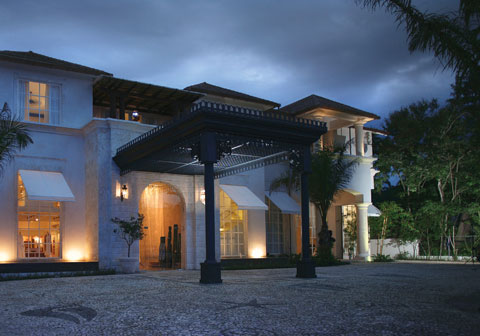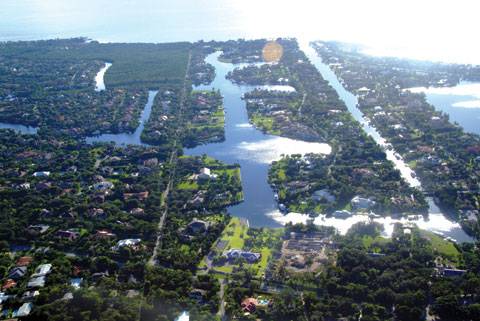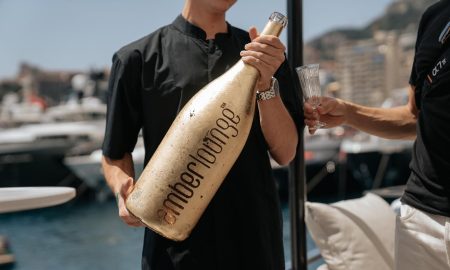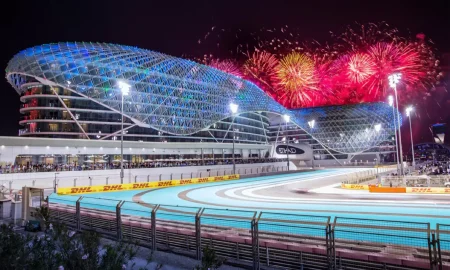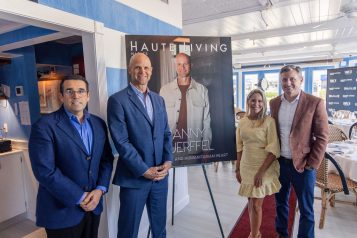With the Dominican Republic becoming a destination for the rich and famous, the Caribbean island is successfully waving adios to the spring break all-inclusive stigma.
By Marina Cashdan
In fact, maintaining the natural aesthetic is very coveted by the PuntaCana group, who set aside 1,500 acres for a natural reserve on the property-a place for guests to really enjoy the diverse geography of the country.
Ten years ago, the flighty service, modest rooms, and buffet-style dining was a small price to pay for a dirt-cheap, all-inclusive trip to the sandy beaches, clear water, and perfect wind-sailing breezes of the Dominican Republic. But over the last few years, tourism in the Dominican Republic has shifted from bargain flights and economical all-inclusive resorts to upscale designer hotels offering world-class restaurants, personal butlers, and opulent spas, among other pricey perks. Well-heeled travelers have eclipsed spring breakers, and economically, tourism has exceeded sugar production, the country’s top export.
Formerly known as the best bargain in the Caribbean, in recent years, the Dominican Republic has set its standards on a higher echelon of tourist. Boutique-style hotels like PuntaCana Resort & Club’s enclave Tortuga Bay, the Sivory Punta Cana, and Casa Colonial started the trend, followed by the recently opened $500 million Cap Cana, a 30,000-acre project with Ritz-Carlton and Donald Trump among the developers. Come September, Westin’s Roco Ki Beach will be open for business; the Four Seasons, Hyatt, and other upscale chains will be opening their doors shortly after; and the wealthy Najri family are currently in negotiations for the property in Samana that they purchased in 1997. (Samana’s El Catey airport will have direct flights from the U.S. starting next year, if that’s an indication of near-future plans for development.) While most of the allure is the year-round impeccable weather and pristine beaches, world-class golf courses have taken second, including Casa de Campo’s four Pete Dye courses, Cap Cana’s Jack Nicklaus signature golf courses, and Tortuga Bay’s P.B. Dye golf course (set to open in 2009).
Guests at Tortuga Bay-a highly exclusive colony of villas within the PuntaCana Resort & Club that opened in late 2005-might feel like a celebrity (if, in fact, they’re not) from the moment they step off the plane: guests are greeted by the hotel’s VIP agents, whisked through a separate immigration and customs line, then transferred to the hotel, where their personal “villa manager” checks them in within the privacy of their villa. These one- to four-bedroom villas have the white sand and cerulean ocean literally at the back door, not to mention the level of service that offers a private butler, personal golf cart, and villa mobile phone for use. Designed by none other than the Dominican Republic’s golden child, Oscar de la Renta (who owns a condo on the property), the suites are designed to feel like someone’s laid-back, chic Hamptons home, except using only Dominican materials such as local woods and bespoke fabrics-beds of rattan and chairs made of sea grass, for example. The natural woods, subdued whites and beiges, and quiet greens and yellows complement the country’s beautifully diverse vegetation on which the property rests. In fact, maintaining the natural aesthetic is very coveted by the PuntaCana group, who set aside 1,500 acres for a natural reserve on the property-a place for guests to really enjoy the diverse geography of the country.
On the north coast of the half of Hispaniola that makes up the Dominican Republic (the other half is Haiti), a similar aesthetic excellence can be found at Casa Colonial, a favorite of Donatella Versace, who is a frequent visitor. Located at the far end of what is essentially a gated community of hotels and resorts, the 50-suite Casa Colonial is a thoughtfully designed gem. Put together by Dominican native Sarah Garcia-daughter of owner Don Isidro Garcia-the hotel is reminiscent of Miami’s Delano but eschewing overly stylized Philippe Starckisms (now tiresome) for warm Dominican-inspired accents that emphasize the country’s natural resources in a design-savvy space. Garcia used Dominican coral, stone, iron, and mahogany wood throughout the property and dotted the hallways with clay jars once used on her family’s farm. Inspired by a family vacation to a sea town in Tuscany, she managed to create a Mediterranean undertone without losing the essence of her home country. This boutique-style hotel-one that pays careful attention to design (or, well, good design)-was nonexistent until Casa Colonial opened its doors in 2004.
Once a destination that called for fluorescent bracelets to get you a buffet meal at your all-inclusive, Dominican Republic now offers upscale á la carte restaurants-like Casa de Campo’s Le Cirque-inspired El Pescador Restaurant (chef Paul Scordino, formerly of New York’s Le Cirque), the Gourmand restaurant at Sivory Punta Cana (which houses an 8,000-bottle wine cellar), and Casa de Campo’s Lucia, helmed by award-winning Dominican-born, Swiss-trained chef Rafael Vásquez.
With the government enticing buyers with tax incentives, for-sale condos in resort-owned communities are sky-rocketing, including Corales, the 123-villa seaside community in PuntaCana Resort & Club (which already has Oscar de la Renta, Julio Iglesias and Mikhail Baryshnikov among its residents), Casa de Campo’s new residences, some costing less than $400,000, and Cap Cana’s Farallon Estates with a much steeper price tag in the millions.
Needless to say, the fabric of this land’s tourism has changed dramatically over the past five years and will continue to evolve, officially putting the Dominican Republic in a higher echelon of Caribbean destinations.







